Phone Call Conversion Points & Adwords
Relentless has been managing Adwords campaigns for many different business verticals over the last 14 years. In that time we have seen the conversion points for many industries switch from web visits and contact forms, to that of direct phone calls. Direct marketing of products and services in local markets has seen phone calls become the most popular lead, especially as search queries from mobile devices has overtaken desktop queries.
We have an American client in a particularly competitive industry (law) that had been running Adwords for several years, and in that time saw the conversion point change from emails and forms, to direct phone calls. Adwords has been pretty successful delivering phone calls for them. But we couldn’t determine just how successful because industry phone call tracking had not yet caught up to other lead tracking. Our job of analyzing the Adwords campaigns had become much more complex as more traffic sources are delivering visitors for a conversion point often disconnected from the web visit (for example, a desktop visitor who picks up the phone to connect a call).
Below is an example of the type of deep dives we do as part of our Adwords management services, to try and understand the relationship their Adwords campaign has on phone calls. We have removed any identifying information, leaving only very general metrics.
Let’s start with the very basics, and really the only thing that matters; total phone calls.
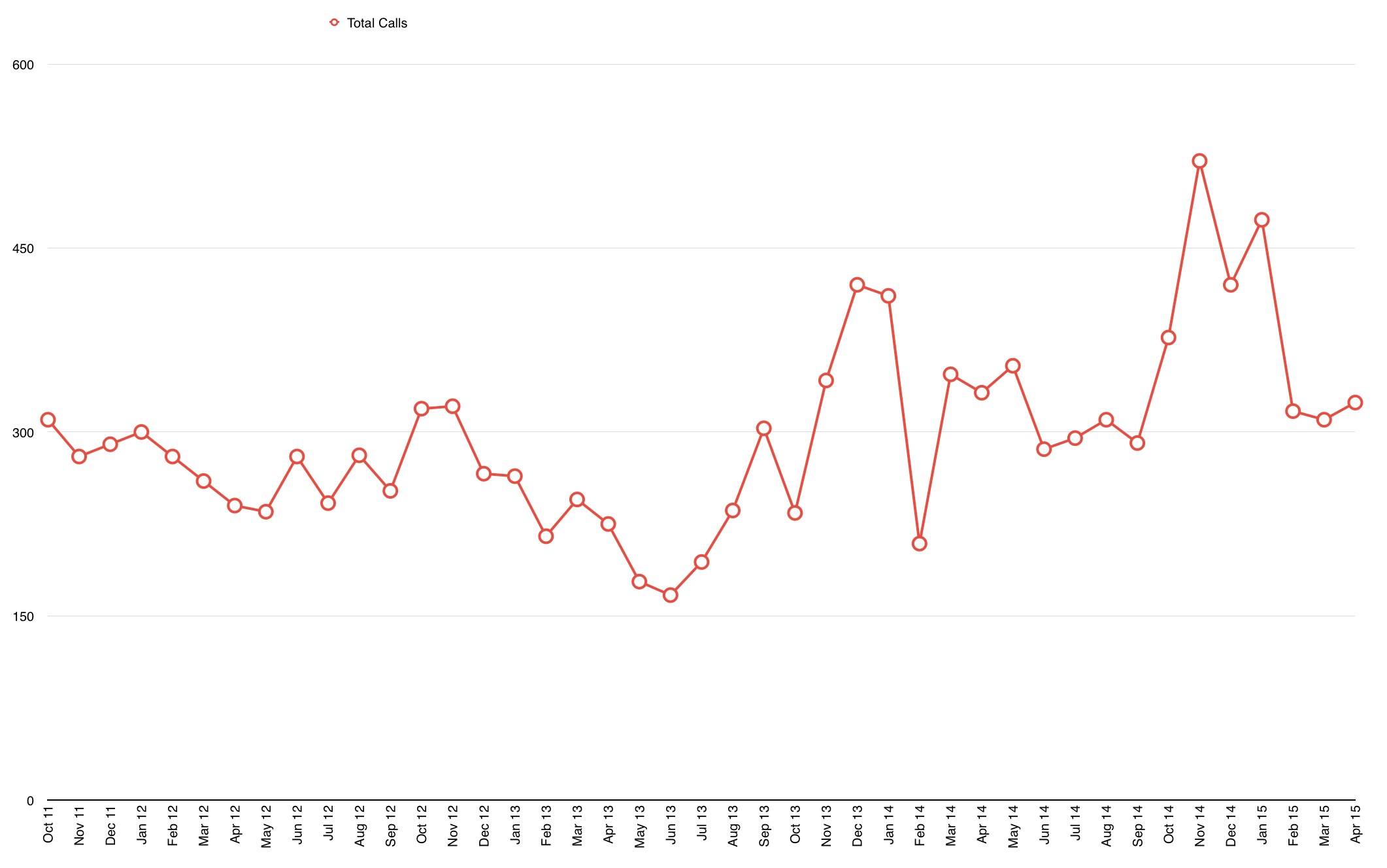
Total phone calls are seen here in red, and the y axis will show the call count for every chart here and after in this report.
Overlaying web traffic, let’s see where these calls might be coming from.
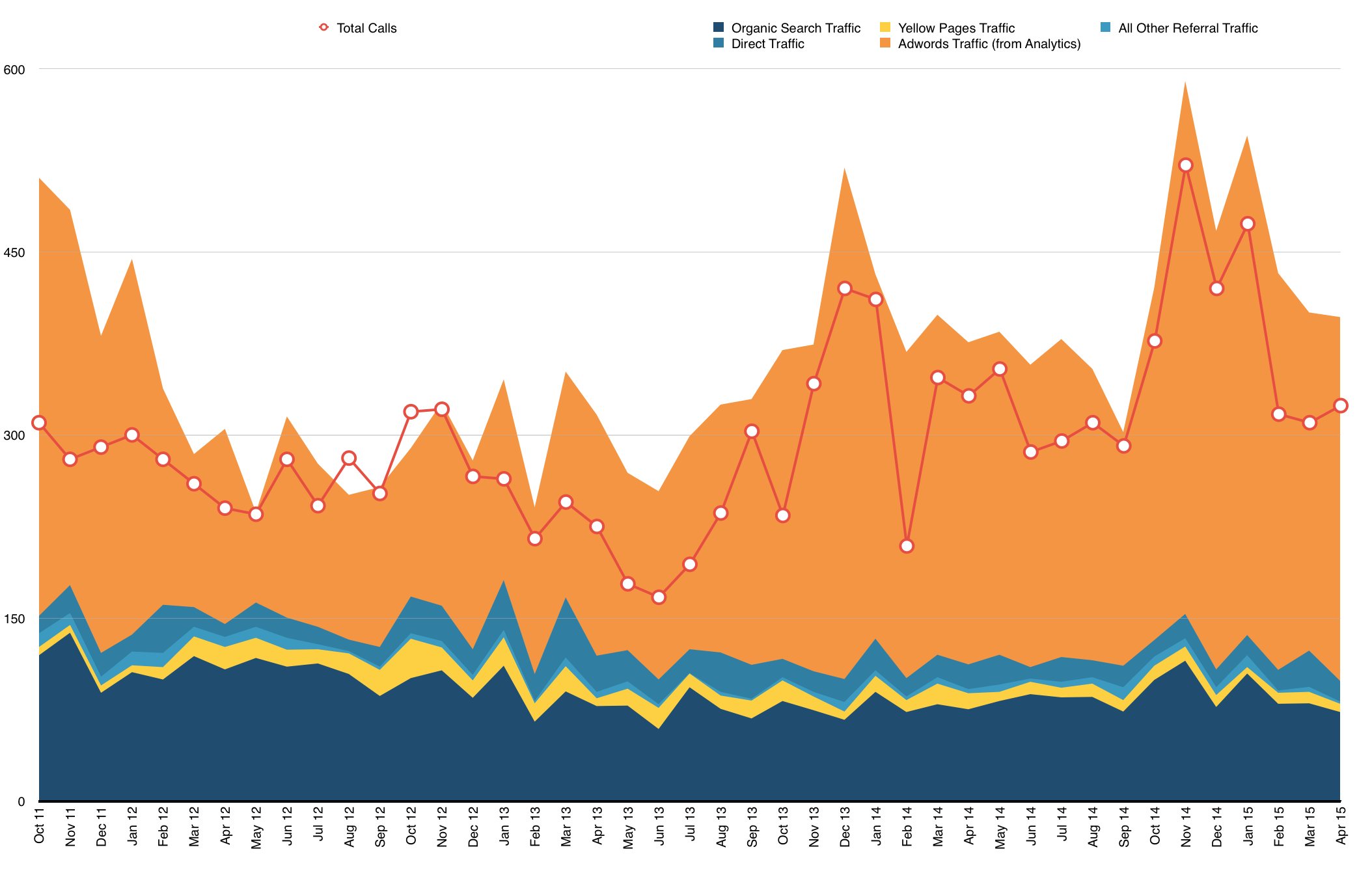
Total calls correlate nicely with Adwords. We knew this, and this is more or less why we base the cost per call on Adwords and not by extrapolating other sources.
Other things that stand out: organic search is trending downward, and Yellow Pages has had significant traffic over the years.
But if we change the traffic chart to that of a percentage of the whole, we can see that the site is probably suffering from lost search traffic. Phone calls were peaking in 2012 around 275-300+ at the same time that organic search (and Yellow Pages for that matter) was at its strongest.
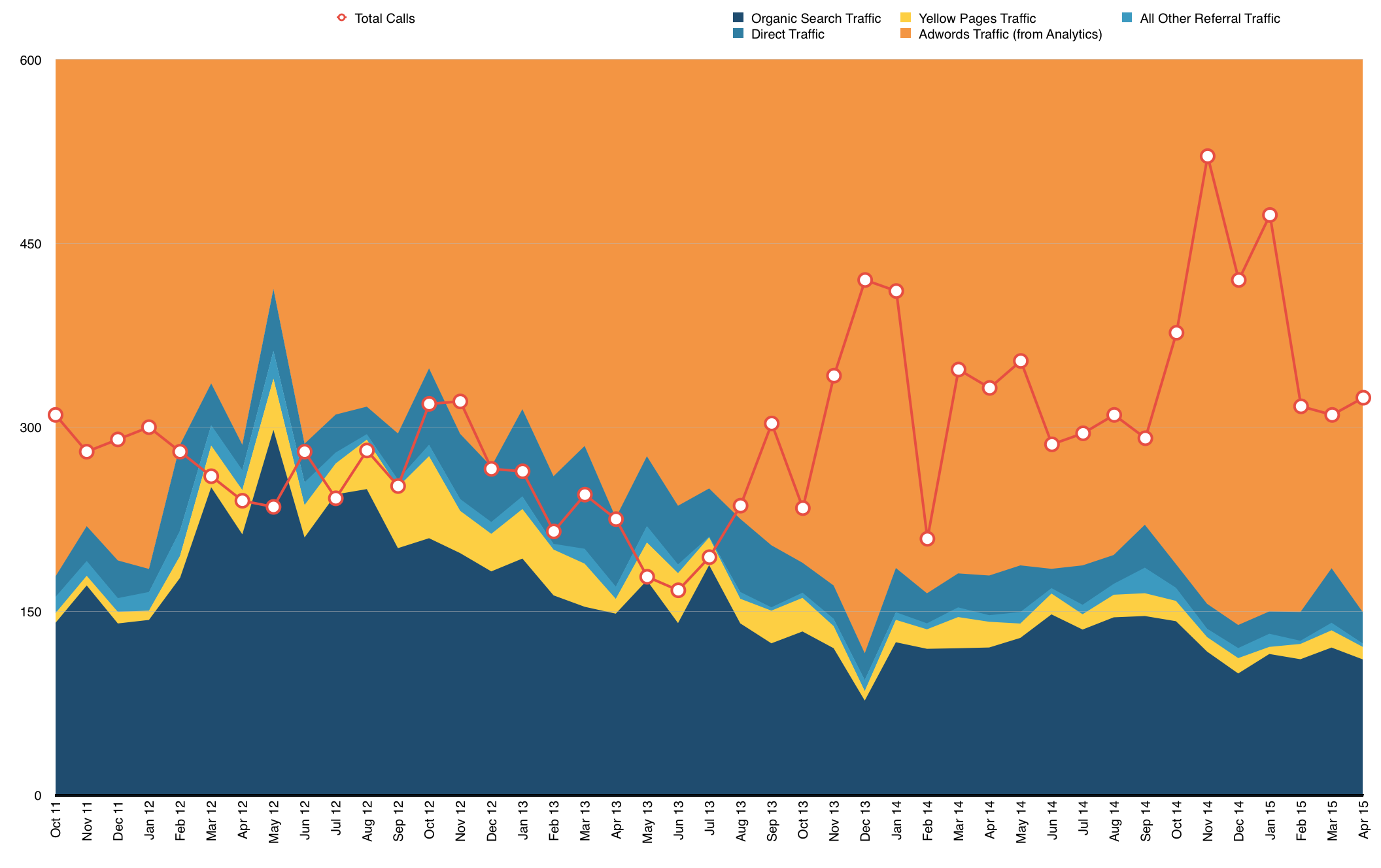
There are other variables here as well of course. That time in 2012 was also some of the highest desktop CPCs. But this was also some of the lowest ratios of Adwords as a whole.
The broader point is that while organic search continue its steady decline since 2012, Adwords has had to prop it up to keep the rate of calls climbing.
We don’t believe this to be totally at the fault of a losing SEO game. We believe this has to do with significant shifts in the interaction model of the search engine itself. We know that organic results are becoming less and less available and Google is pushing users towards paid and Google-owned properties. We think this is as much a comment on the insignificance of websites in general, as it is any specific SEO metrics. Combined with mobile CTAs happening outside of the website (call extensions) and it starts to feel like this trend will not be reversing anytime soon.
So if the total calls are all about Adwords, then let’s look at Adwords costs in comparison.
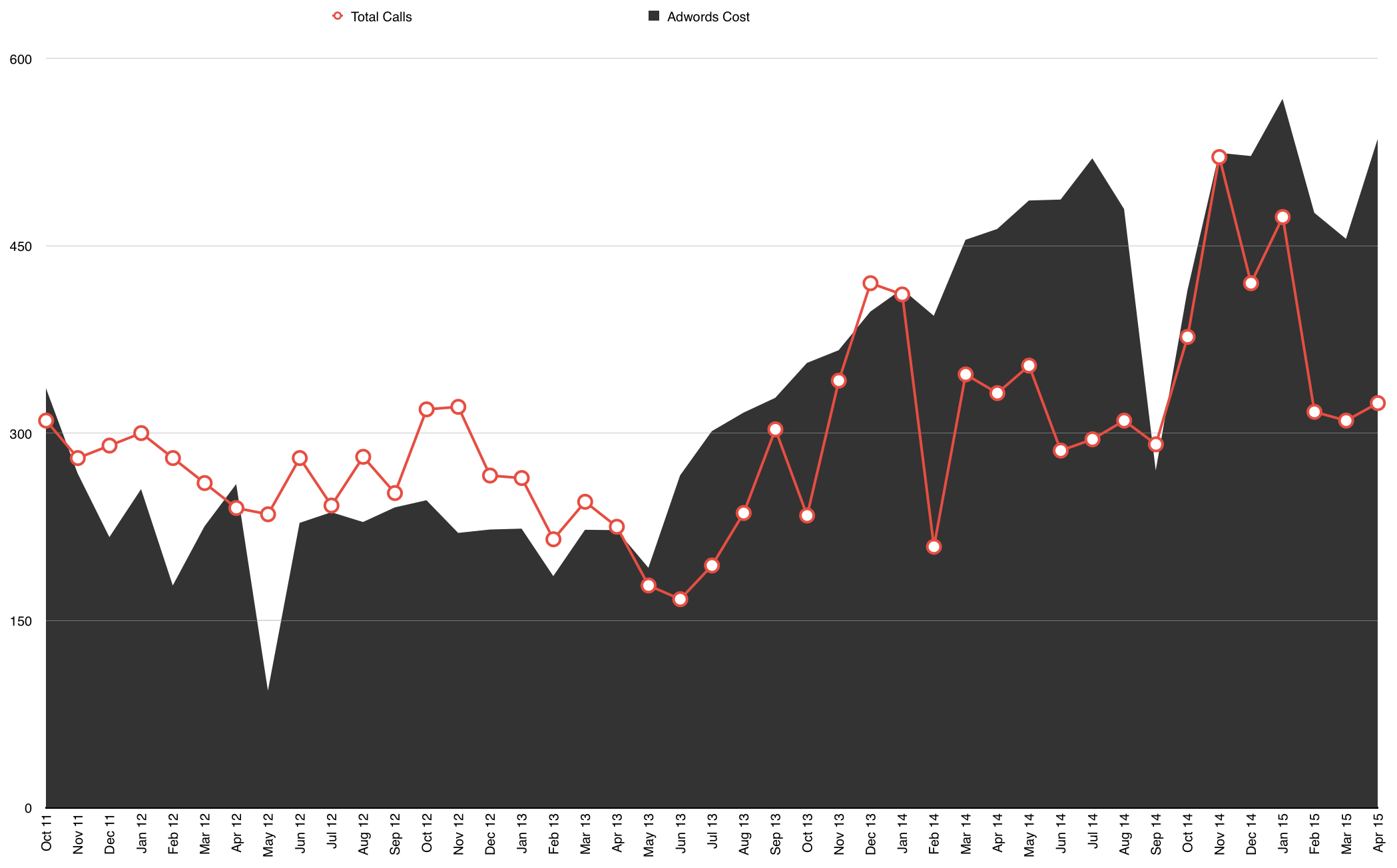
Here too, total calls more or less correlate with Adwords spend. But the big question that comes to mind; why didn’t the total call count drop in September 2014 (when the budget dropped)?
We dropped Adwords spend by 44% in September and the result was only a 6% drop in calls. Why?
To go deeper here, we need to separate mobile Adwords cost, and desktop Adwords cost.
Below is total call counts versus desktop Adwords spend. From this chart, it looks like we were over indexing (ie: over spending) on desktop paid search. The drop in September seems to had insignificant effects on total calls, and the reinstated budget of October and November only seem partially related.
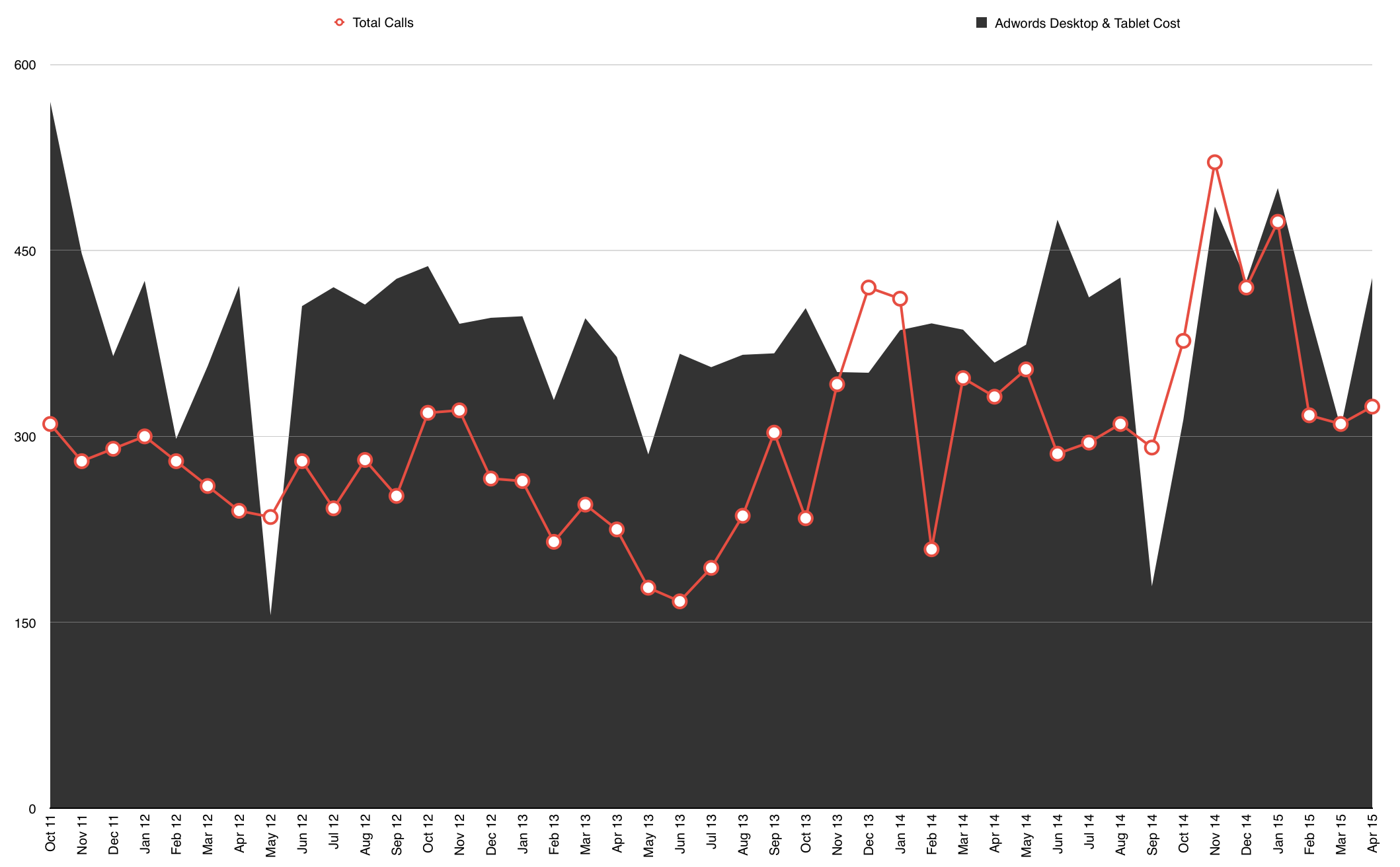
If we look at mobile Adwords spend, this appears to correlate a bit better. The drop in spend, and subsequent increase both seem to correlate better than the desktop budget. But still not perfect.
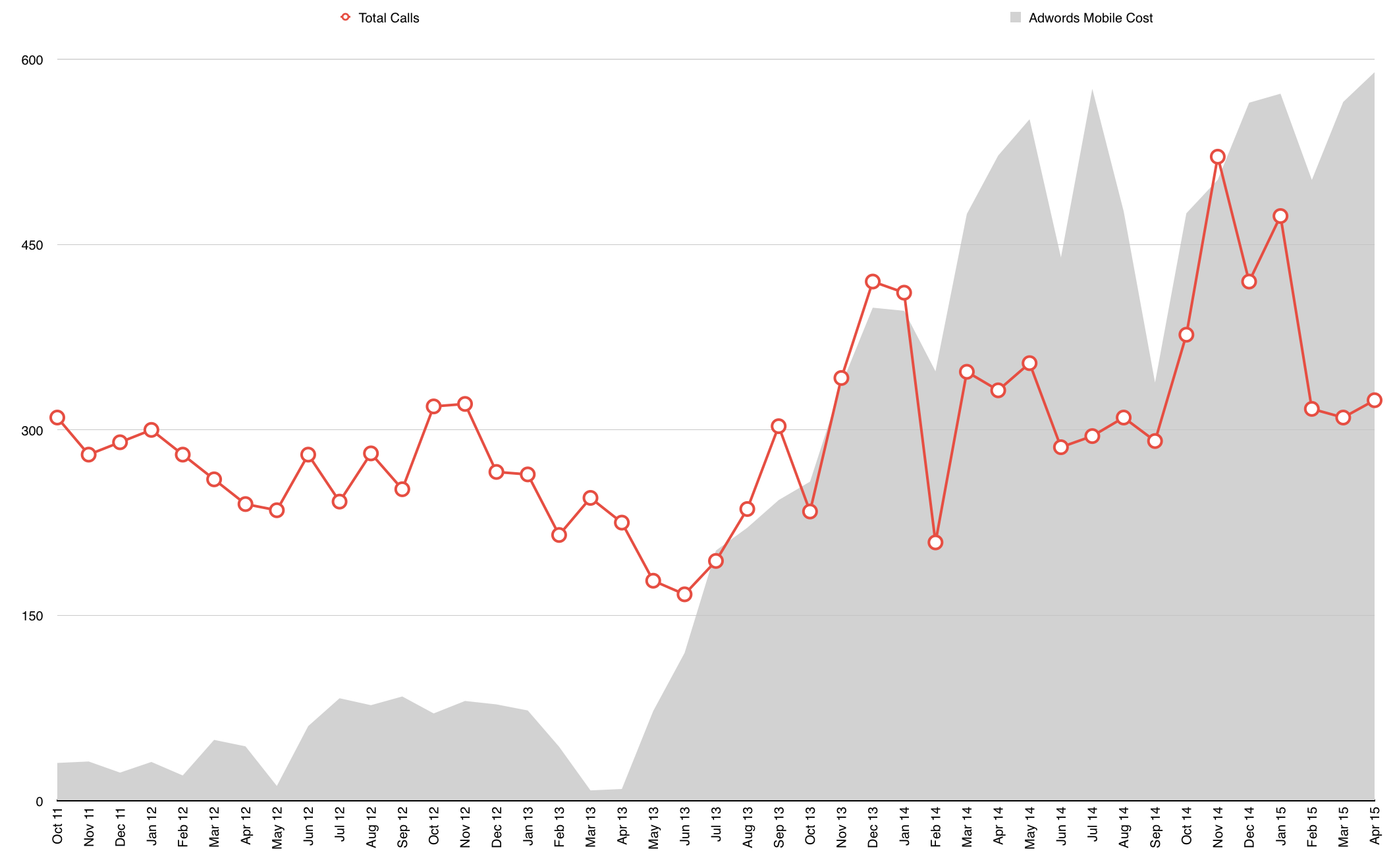
There are many other vectors we can use to try and understand how Adwords is impacting total calls. Position in the ad stack is perhaps the most relatable metric. Below are total call counts versus average position based on device.
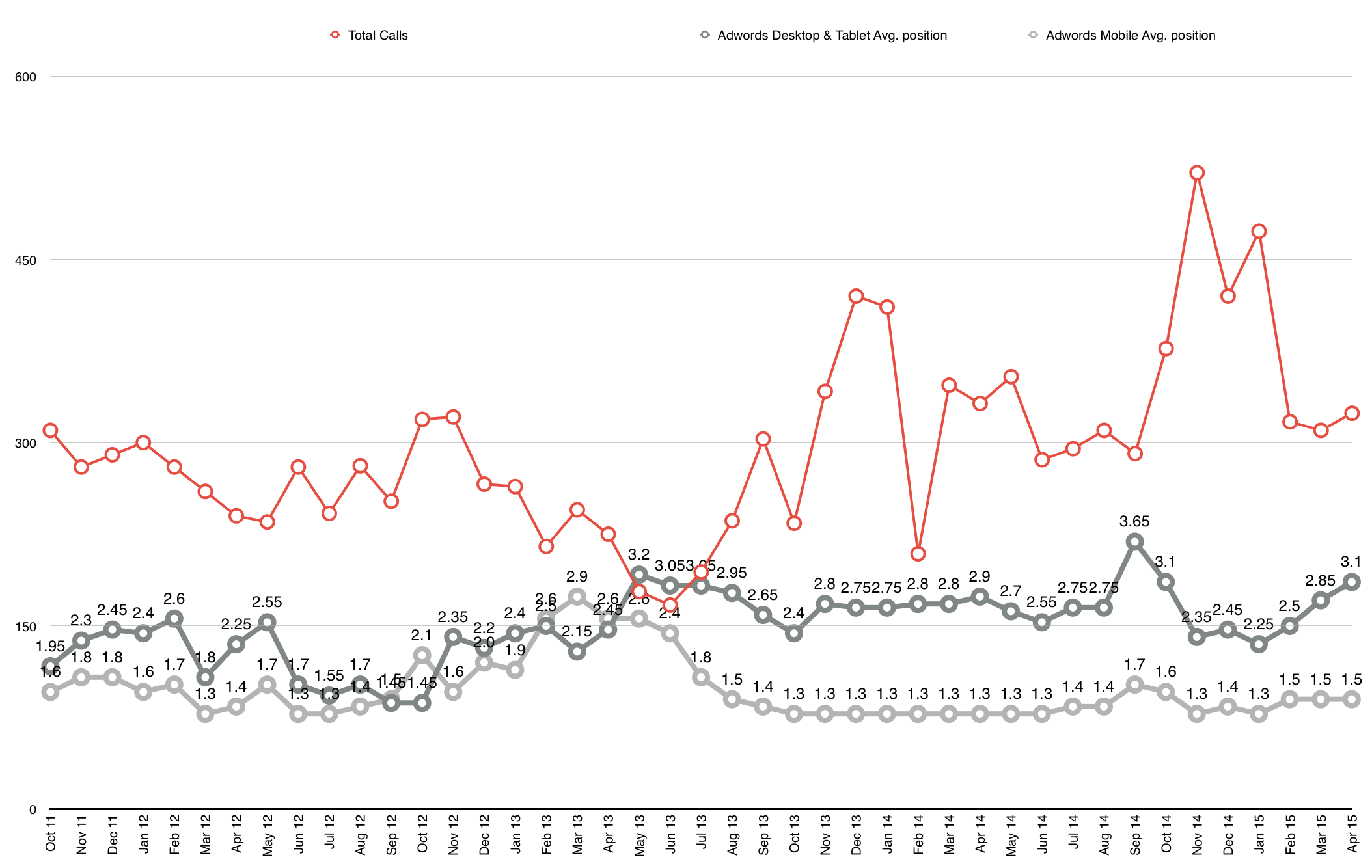
The main takeaway here is the fact that the higher call count months in 2012 (that correlated with high organic search and yellow pages) also correlate with some of the highest all-time positioned desktop and mobile ads.
The other interesting thing here is September 2104, where the budget dropped by 44% but calls only dropped by 6%. In this view can see that desktop position dropped to 3.65 while mobile was still more or less top of page at 1.7.
In fact if we compare mobile clicks in August compared to September, these were only down 4%. This seems to line up with the total call counts being down 6%. (Desktop clicks on the other hand were down 32%.)
But the interesting thing about this 4% drop of clicks in September, is that the slight drop of position of 1.4 to 1.7 made our clicks cheaper, so we actually spent 29% less for just 4% less clicks.
There are many variables at work here, but CPC is probably most important in influencing position. We can look at the historic CPCs again segmented by device.
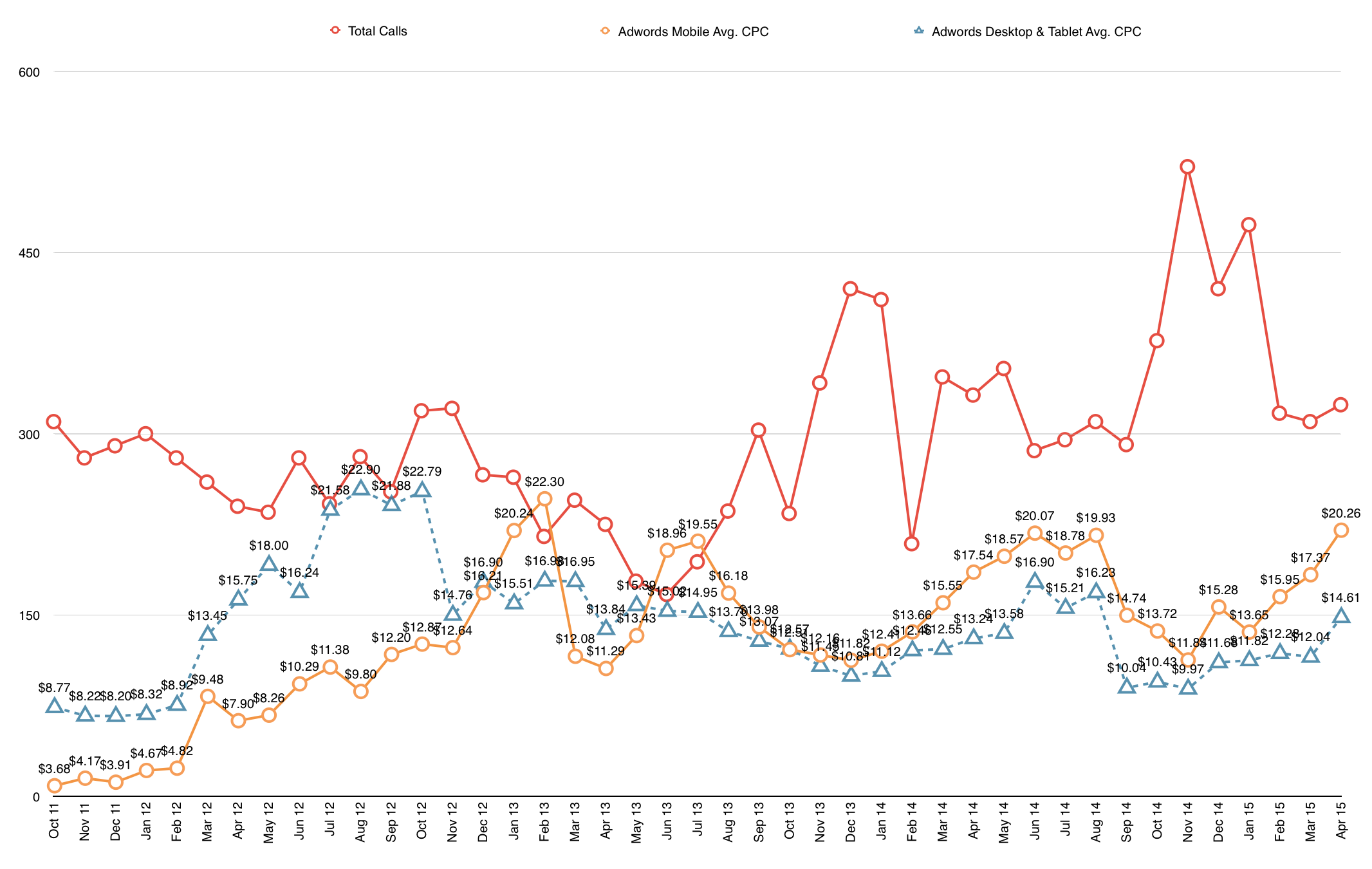
Nothing is settled here. There are so many factors in motion and changes are happening on the platform, user behaviour, growth of mobile, and other advertisers making moves. Experimenting with CPCs, ad positions, and device ratios is a must.
The big take away for us is that since more and more of the important KPIs move away from the website, we need to be able to make sense of Adwords metrics in ways we never had to before.
Posted on: 05/19/2015
Posted by: Craig Hauptman – President & Founder
Related Insights:
Search Traffic: Paid vs. Organic – The Fundamental Differences and How to Leverage Each Type
Mobile Majority – Why a Mobile-First Approach is so Important
The AIDA Model – When to Use Specific Digital Ad Platforms Throughout the Sales Funnel
A/B Testing for Continual Improvements – Split Testing for Incremental Website Improvements
AI Chatbots & Search Engines – How AI Chatbots Will Impact Search Engines
















